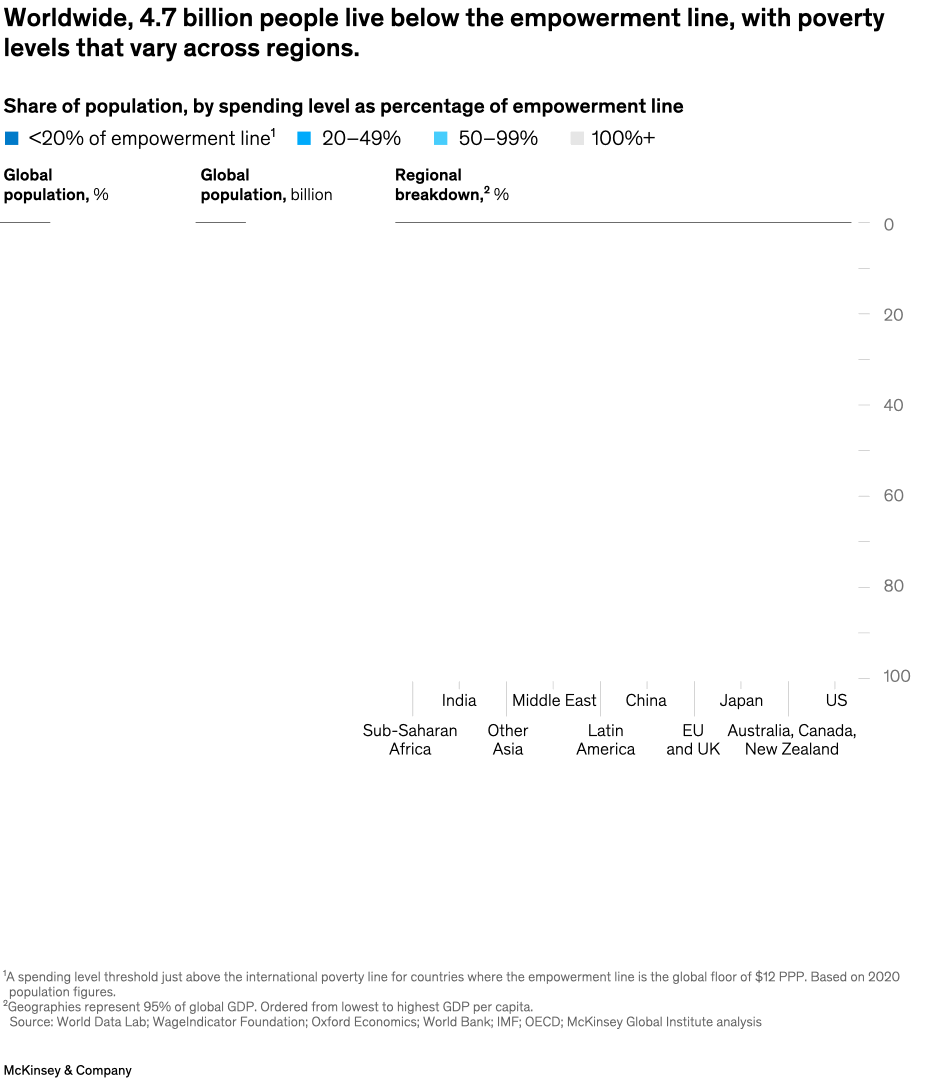What would it take to raise living standards and get on a path to net zero? One way to begin addressing these simultaneous challenges is understanding the empowerment line, the point at which individuals can meet their essential needs and begin to achieve security. According to Anu Madgavkar, a partner of the McKinsey Global Institute (MGI), MGI chair Sven Smit, and coauthors, about 4.7 billion people worldwide—approximately 60 percent of the global population—live below the empowerment line. Productivity-driven growth, business innovation, and technology advances could help close the empowerment gap while also contributing to net-zero goals.

Image description:
A series of segmented bar charts shows different percentage shares of regions of the world living below the “empowerment line,” a spending level threshold just above the international poverty line for countries where the empowerment line is the global floor of $12 purchasing power parity. The regions are, from largest percentage below the line to least: Sub-Saharan Africa, ~90%; India, ~77%; other Asia, ~65%; Latin America, ~60%; Middle East, ~57%; China, ~51%; EU and UK, ~26%; US, ~26%; Australia/Canada/New Zealand, ~20%; and Japan, ~19%.
Footnote: Based on 2020 population figures. Geographies represent 95% of global GDP. Ordered from lowest to highest GDP per capita.
Source: World Data Lab; WageIndicator Foundation; Oxford Economics; World Bank; IMF; OECD; McKinsey Global Institute analysis
End of image description.
To read the report, see “From poverty to empowerment: Raising the bar for sustainable and inclusive growth,” September 18, 2023.